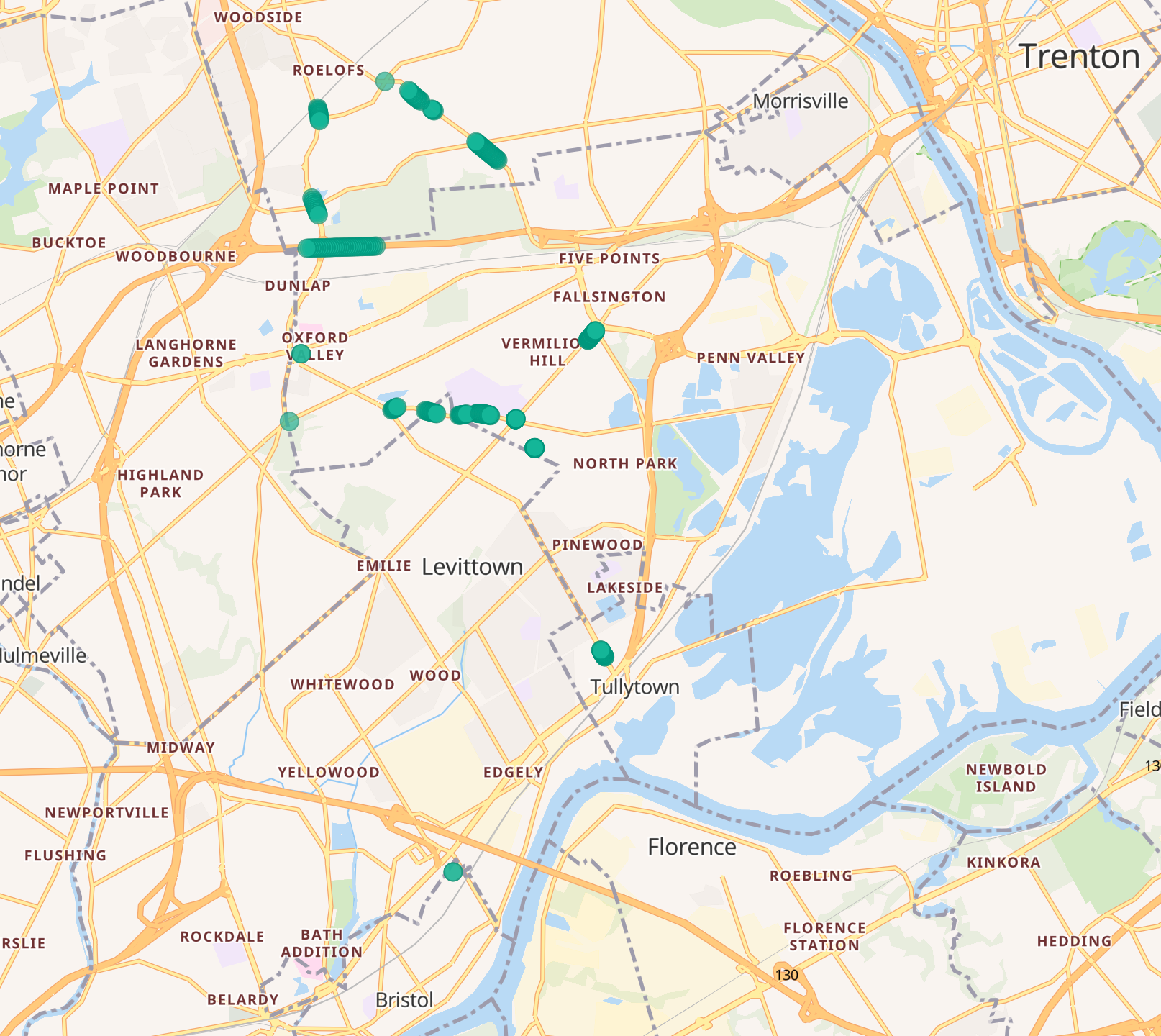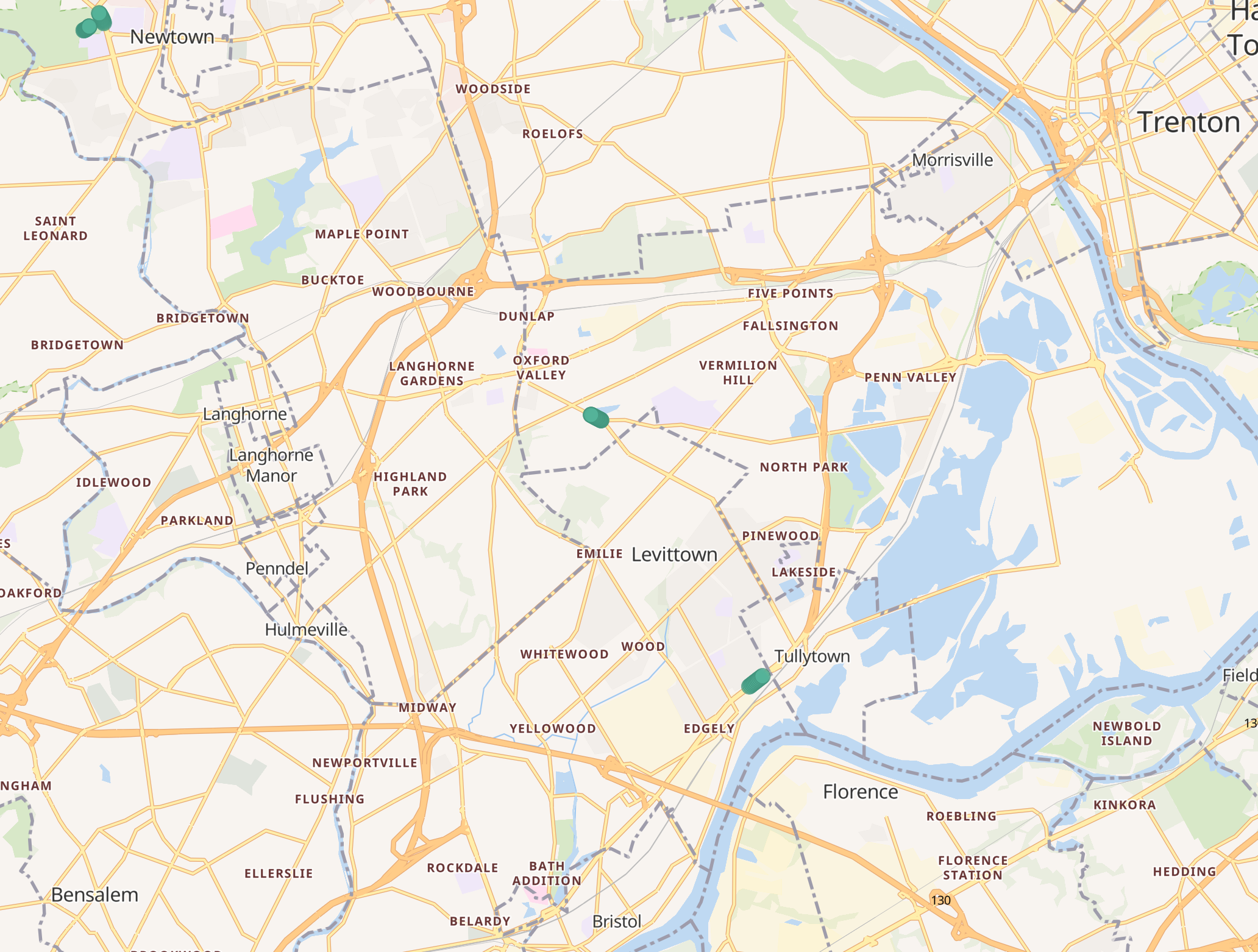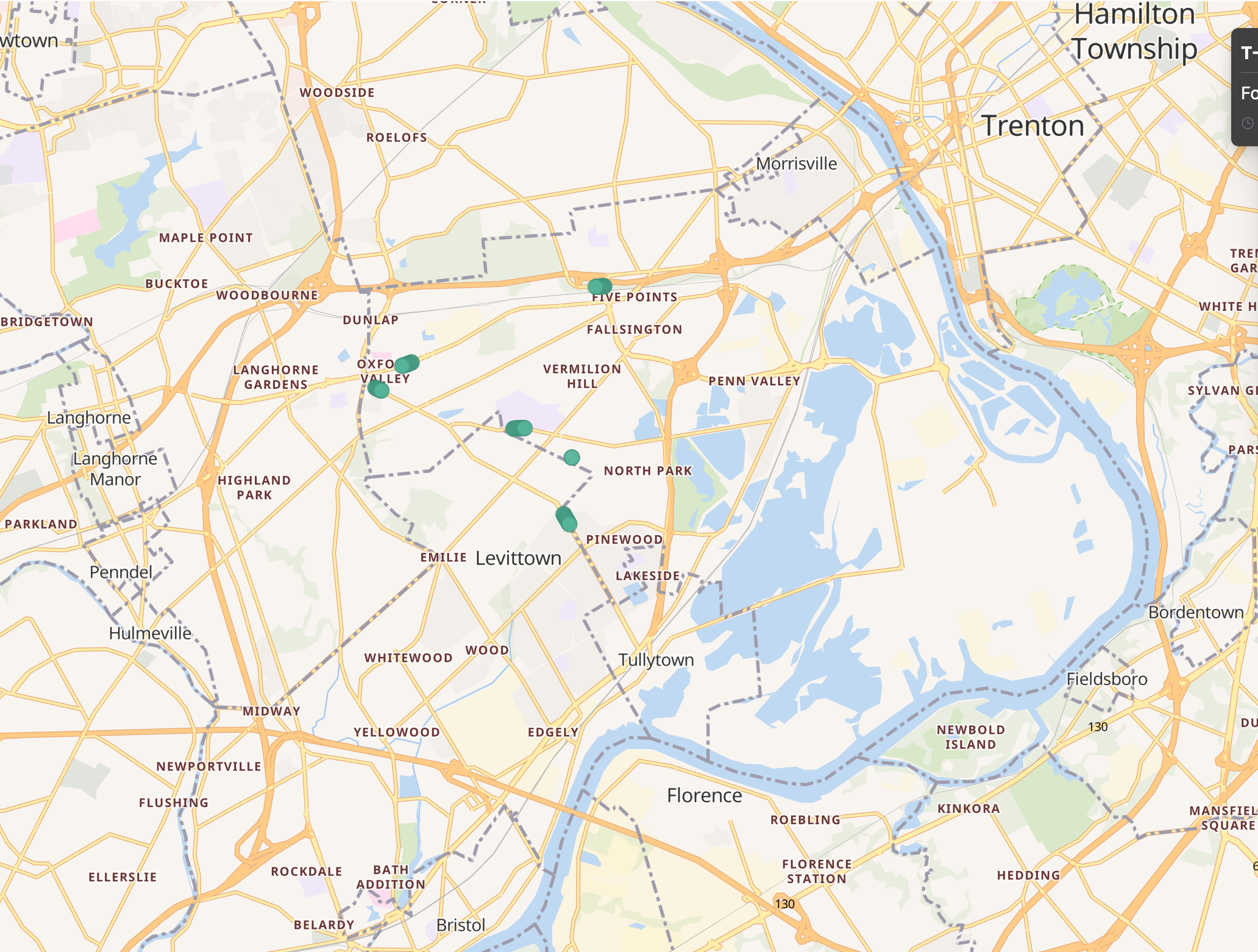A Comparison of Node/Cell Density in my Area
See my video on this article as well
I wanted to show some visual data that emphasizes the fact that T-Mobile has a higher node/cell density in my area. I know this is true in a lot of other areas as well. I believe this helps in regards to minimizing congestion on the radio-access-network (RAN), helps with coverage, and makes the RSRQ/quality consistently lower. T-Mobile just needs the core/backhaul to support it.
When I do my monthly reporting, T-Mobile is averaging around -10 for RSRQ. AT&T is usually second, and Verizon is last (around -13). In my opinion, there appears to be a strong correlation in RSRQ/quality and tower density. The more tower density(and cells/bands), the better quality of signal.
For the last week (or so), I am showing some of my travels in my area. Here is where I travelled.

Let's look at the number of nodes/cells for each carrier. The node usually corresponds to a tower-site and there are multiple cells per tower-site. This is just random traveling. Depending on where I am traveling, I won't see every cell on every tower/node. Just see how much higher T-Mobile is in Node/Cell density in this area.
Verizon
18 Nodes
70 Unique Cells
AT&T
20 Nodes
79 Unique Cells
T-Mobile
38 Nodes (40 if we count some of the Sprint sites that are now showing up)
100 Unique Cells
T-Mobile has 100 unique cells, AT&T has 79 unique cells, and Verizon has 70 cells. This seems to line-up with the average RSRQ readings I typically see.
For this subset of data, I want to show the network quality readings and how this appears on a map. This totals 4G and 5G.
Verizon Bad Quality (233 Bad Plots)

AT&T Bad Quality (55 Bad Plots)

T-Mobile Bad Quality (52 Bad Plots)

As I mentioned earlier, AT&T and T-Mobile are very close on maintaining good signal quality/RSRQ. I don't have a report on the number of total cells/bands per site in this area but I think AT&T may have more than Verizon (in this area). That would be a good report to do on Cellmapper. A quick look at the info seems to confirm.
AT&T seems to have an average of 4-5 bands per tower. Verizon is around 3-4. T-Mobile is a 2-3 on LTE and maybe bands 71 and 41 for 5G.
I think the reason AT&T is so close to T-Mobile is due to the density of cells on each node/tower as compared to Verizon.
What do you think?